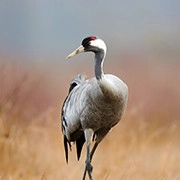What’s In An Elephants Diet?

When we think of an animal as enormous as an elephant, it's hard not to wonder how they maintain their massive size.
You might be surprised to learn that elephants are herbivores, meaning they only eat plants and don't consume any animals.
But what exactly do these giants eat to fuel their bodies? Let's dive into the fascinating details of an elephant's diet!
What Do Elephants Eat?
Wild elephants have a diverse diet, feeding on a variety of plants to meet their nutritional needs. Their primary food sources include grasses, bamboo, roots, fruits, and tree bark. Elephants are particularly fond of using their tusks to remove bark from trees, which is a significant part of their diet.
Interestingly, while it was once assumed that all elephants ate the same foods, studies show that African and Asian elephants have distinct dietary preferences. Asian elephants favor monocot plants, such as palms, bamboo, and grasses, while African elephants tend to remove and break apart young trees, consuming their foliage and saplings.
The Majestic Golden Eagle: A Fierce Hunter With Wings That Soar At 200 MPH—Learn More About This Mighty Bird!
Is it cute or harmful? Discover what experts say about dressing up your feline friend!
In a heartwarming rescue, New Zealanders lifted 30 stranded whales on sheets, returning them safely to the ocean!
Want to know what makes red foxes so crafty? These 5 shocking facts will change how you see these clever creatures!
Can Giraffes Really Sprint at 37 Miles Per Hour? The Surprising Truth About Their Speed!
Uncover the Secrets of Scarlet Macaws: Personality, Diet, and Care Tips You Need to Know!

These different eating habits also have a unique impact on their environment. African elephants are known for being more destructive as their preference for tree saplings can sometimes result in large patches of land being left barren. On the other hand, Asian elephants are considered "gentler eaters" since they leave behind fewer tree scars and consume more palms and grasses.
What Do Elephants Eat in Captivity?
Elephants in zoos or sanctuaries often have diets similar to those of wild elephants. However, they are sometimes fed hay, which is a common supplement to their diet. An mature elephant may eat up to 4 to 5 bales of hay each day, equivalent to 10-18 pounds or 4.5-8 kg of hay.
Hydration: A Vital Part of the Diet
Water is just as essential as food in an elephant's diet. On average, an elephant drinks between 100 to 200 liters (25-50 gallons) of water each day. During droughts, elephants use their tusks to dig for water underground, showcasing their incredible ability to survive in harsh conditions.
How Elephants Maintain Their Size
Given their size, elephants need to consume a significant amount of food daily. They can eat up to 330 pounds (150 kg) of food in a single day! Despite eating large quantities, their digestion is inefficient; only around 44% of the food they consume is digested. The rest is expelled as waste.
Elephants spend up to 18 hours a day eating, which is about 75% of their daily routine. The remainder of their day is often spent resting or sleeping. To find enough food, elephants require large areas to roam. Typically, herds are led by the oldest and largest female, known as the matriarch. She has a wealth of knowledge, remembering past locations of food and water, which benefits her entire herd, especially during times of drought.

The Role of the Matriarch
The matriarch's memory plays a crucial role in the survival of her herd. Older matriarchs tend to have higher rates of survival among their group due to their extensive memories of food and water sources. These older elephants guide the herd to resources, ensuring that younger members learn the locations of vital sustenance.
Through the matriarch's leadership, elephants have an extraordinary ability to survive and thrive, passing down crucial survival knowledge for generations. Their diet isn't just about fueling their bodies – it's about the bond and wisdom shared within the herd, ensuring the survival of future generations!
What Do Elephants Eat?
Video by Travel For Wildlife

 · Animal Team
· Animal Team